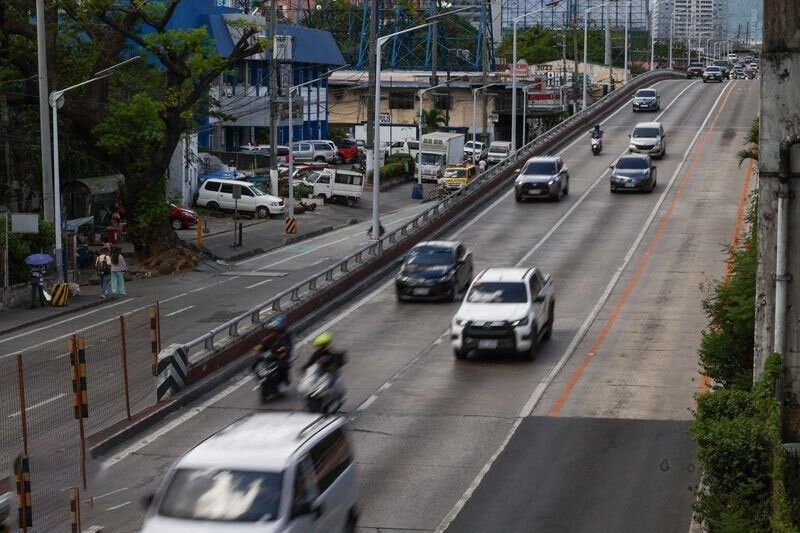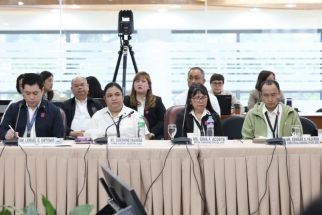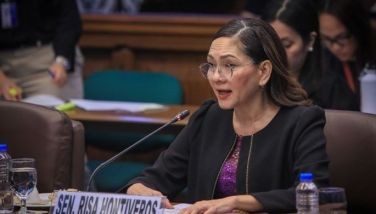LGUs in Metro to adopt 7-to-4 working hours

MANILA, Philippines — The Metropolitan Manila Development Authority (MMDA) and Metro Manila Council (MMC) yesterday issued a resolution urging local government units (LGUs) to adjust working hours from 7 a.m. to 4 p.m.
The resolution, which was passed on Feb. 28, aims to mandate all national government agencies in the National Capital Region (NCR) to adopt the same modified working hour schedule.
It also recommends to President Marcos the issuance of an executive order to implement the resolution on a mandatory basis effective April 15.
An EO is needed to execute or implement the resolution filed by the MMC.
The move comes in response to the persistent traffic congestion issues in Metro Manila, which have necessitated innovative solutions to improve commuting conditions and enhance the well-being of citizens.
A comprehensive study conducted by the MMDA underscored the need for innovative measures to address traffic congestion.
The findings emphasized the potential effectiveness of implementing a standardized working schedule for government offices, particularly during peak hours, in reducing traffic congestion.
The traditional 8 a.m. to 5 p.m. working hours in government offices have been identified as contributing to traffic congestion during rush hour periods in Metro Manila, as they align with the standard working hours of private companies.
During the Bagong Pilipinas town hall meeting at FilOil EcoOil Center in San Juan yesterday, MMDA acting Chairman Romando Artes reported a 17.68-percent increase in traffic volume from 2019 to 2023.
In 2019, approximately 3,087,980 vehicles passed through major thoroughfares compared to about 3,634,233 vehicles last year.
Mitigation
In a phone interview with The STAR, MMC president and San Juan City Mayor Francis Zamora said that MMC members – the 17 mayors in Metro Manila – have signed and approved the resolution.
Zamora noted that the resolution’s primary goal is to mitigate the traffic woes in the nation’s capital.
“The resolution was discussed and approved during our last meeting. We agreed that as long as the eight working hours are being complied with, there will be no problem,” he said.
Zamora said that LGUs would also continue to have “skeleton forces” personnel from 4 p.m. to 5 p.m. each day, especially in frontline departments that are always on duty during emergency cases.
Improved traffic
Traffic volume in Marikina City is expected to improve with the new working hours that will be implemented in Metro manila LGUs.
Mayor Marcelino Teodoro made the statement as he welcomed the MMC resolution.
“It will help in vehicle volume reduction,” Teodoro said in a text message.
He added that they are amenable to the adjusted working hours for local government employees.
Meanwhile, the government remains determined to build high-capacity mass transportation system to ease the worsening traffic congestion in Metro Manila and other urban centers in the country, President Marcos said yesterday.
Speaking during a government-organized town hall meeting on traffic concerns in San Juan City, Marcos stressed that there is no other solution to Metro Manila’s traffic woes except adopting a mass transport system.
He said that even in big cities such as New York and London, all people – rich or poor – take mass transportation such as trains or subway.
“So that’s really the only solution. That’s what we’re pursuing... Make it better, expand it, speed up the mass transportation system,” he said.
Transportation cost of road users, comprising vehicle operating cost and travel time cost, is now at P4.9 billion per day in Metro Manila, citing a 2022 report by Japan International Cooperation Agency, according to the President.
He said that the amount could increase to almost P9 billion a day if nothing is done.
He added that traffic congestion in Metro Manila is costing the country P3.5 billion a day, citing a Department of Finance study.
“So (mass transportation) is where we’re going. The only answer to (traffic woes), really, is the mass transit systems, so that’s what we’re fast-tracking. That’s what we’re going to do as a priority, until now it’s been a priority in infrastructure to address traffic,” Marcos said.
He also reported on the ongoing construction of railway projects, as well as their current phases of development.
He said the North-South Commuter Railway project from Tutuban to Malolos is already 61 percent complete, while the North-South Commuter Railway Extension Project from Malolos to Clark is 56.5 percent complete.
The North-South Commuter Railway Extension Project-South extension from Manila to Calamba is 38 percent complete; Metro Manila Subway Project, 41 percent complete; LRT Line 1, Cavite extension, 80 percent complete; MRT Line 3 rehabilitation and maintenance, 85 percent complete; Unified Grand Central station or the Quezon City common station, 83 percent finished and the MRT line from Quezon City to Bulacan, 67 percent complete.
The President has called for a comprehensive solution to the country’s traffic woes and has directed agencies to come up with work adjustment plans.
“What the President really wants is a comprehensive, holistic approach to solving the traffic problem – not the piecemeal approach, as has been the case all these years,” National Economic and Development Authority Secretary Arsenio Balisacan earlier said.
Balisacan also attended the town hall meeting yesterday.
No need for traffic czar
There is no need for the government to appoint a “traffic czar” to solve problems caused by traffic jams in Metro Manila, according to the MMDA.
During yesterday’s town hall meeting, Artes brought up the proposal, but did not cite the proponent.
Previous reports indicated that it was floated by the Management Association of the Philippines.
“I think coordination among government agencies, which the President has started, is more effective,” Artes told Marcos, his fellow Cabinet members and chief executives of the 17 local government units of Metro Manila.
“The permanent solution to the worsening traffic situation is infrastructure, like roads and bridges, efficient mass transportation, decongestion of the NCR and effective traffic policies,” Artes added.
He also floated anew the proposal to transfer over 200 regional offices of government agencies that should not be found in Metro Manila, but were established in the metropolis.
Among other measures to be proposed, according to Artes, are additional Mabuhay lanes or alternate routes to avoid using the already congested EDSA and C-5, as well as adding more areas to enforce the exclusive motorcycle lane policy aside from Commonwealth Avenue. — Jose Rodel Clapano, Emmanuel Tupas, Helen Flores, Ghio Ong
- Latest
- Trending

































